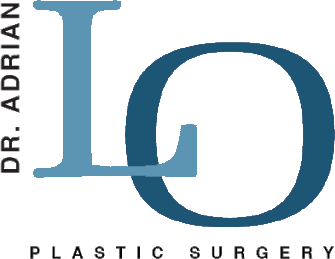
Gynecomastia is more common than people realize. Also called “man boobs,” between 40% and 60% of men experience this condition at some point in their lives. If you have this condition, you’ve probably wondered what causes it. This blog covers factors that can contribute to gynecomastia and how to treat it.
4 Min Read:
What Is Gynecomastia?
Gynecomastia is the development of enlarged glandular tissue in a man’s chest, creating the appearance of breasts or “man boobs.” This condition can affect boys and men of all ages and is mainly an appearance or major cosmetic concern. Occasionally there may be symptoms such as tenderness, puffy nipples or nipple sensitivity.
While gynecomastia generally isn’t detrimental to physical health, it can have a huge impact on one’s mental well-being. Enlarged male breast tissue can cause men to feel low self-esteem, embarrassment, and even shame. Men with “gyno” often do not take their shirt off and avoid swimming or the beach. Men who have tried conservative remedies without results might feel hopeless. Figuring out the possible cause of this condition can be a helpful first step in effective treatment.
The Causes of Gynecomastia
Natural Hormone Changes
The most common cause of gynecomastia is hormone imbalance. Everyone has testosterone and estrogen hormones in their bodies, which naturally fluctuate and change throughout certain life stages. If men have low testosterone or high estrogen levels, enlarged breast tissue can develop.
- Teenagers: During puberty, hormonal fluctuations can cause gynecomastia. Sometimes gynecomastia resolves on its own, but for many men, it doesn’t.
- Older Men: Testosterone levels tend to decrease with age. As a result, fatty tissue can increase in the chest area. This can lead to enlarged breasts. When the ”man boobs” is mainly fat, this is called pseudogynecomastia.
- Genetics: Your genes can play a factor in the development of gynecomastia. For some families, it’s a hereditary issue passed down generations.
Medications
Some medications might cause hormone shifts and imbalances, leading to gynecomastia:
- Anabolic steroids and androgens for muscle gain
- ADHD medications containing amphetamines
- Anti-androgens used to treat prostate issues
- Some anti-anxiety drugs like diazepam
- Tricyclic antidepressants
- Certain antibiotics
- Some heart medications
- Certain herbal supplements
Talk with your healthcare provider to determine if any of these medications could be the cause.
Alcohol and Recreational Drugs
Research has found that heavy alcohol use can cause gynecomastia. The ethanol in alcohol disrupts testosterone production, and the phytoestrogens in alcohol mimic natural estrogen. Alcoholic beverages are also high in calories, causing weight gain.
Studies have linked many recreational drugs with enlarged male breasts. This includes marijuana, heroin, methadone, and amphetamines. Steroid abuse is also a common cause of gynecomastia.
Health Conditions
Certain health conditions can potentially lead to gynecomastia, such as hyperthyroidism and liver or kidney failure.
The liver plays a huge role in metabolizing hormones. Liver diseases can cause hormone imbalances in several ways. Estrogen builds up because it isn’t metabolized. The liver usually clears androgen hormones. If it can’t, they might convert to estrogen. The liver may also make more of a certain protein that binds to testosterone, leaving less for the body to use.
Kidney failure can suppress testosterone production. Built-up blood toxins damage testicular function, which reduces the presence of testosterone in the body. Dialysis to treat kidney failure can cause hormonal changes as well.
Idiopathic Gynecomastia
It isn’t always possible to find the reason for gynecomastia. This is known as idiopathic gynecomastia. Fortunately, not knowing the root cause doesn’t affect your prognosis or treatment options.
How Do You Treat Gynecomastia?
Conservative approaches to treating gynecomastia should be considered before choosing surgery. There are some cases where gynecomastia goes away on its own. Unfortunately diet, exercise, and medications will not improve the “man boobs” especially when it is established or larger in size. If the breast tissue consists of fat, then diet and exercise may help but if the “man boobs” is true gland tissue then diet and exercise will not improve the chest appearance.
Regardless of the cause, gynecomastia is treatable.The best option to treat gynecomastia is by surgery. Gynecomastia surgery can permanently remove “man boobs” and create a normal looking chest and masculine contour. This surgery is customizable to each patient’s needs and can include liposuction for the fat tissue, gland removal which is called mastectomy, and male breast reduction for severe cases of gynecomastia with loose skin.
Am I a Candidate for Gynecomastia Surgery?
If diet, exercise, and medications haven’t worked, you may be a candidate for gynecomastia surgery. Other factors that can determine if you are an ideal candidate include:
- The presence of firm gland tissue behind your nipple or areola.
- Puffiness, tenderness, or sensitivity in your chest area.
- Enlarged breast tissue that won’t go away with diet and exercise.
- The desire to improve your chest contour.
A consultation with a board-certified plastic surgeon who specializes in gynecomastia surgery can help you determine the next steps.
Looking for Gynecomastia Treatment in Philadelphia or New Jersey?
Dr. Adrian Lo is a board-certified plastic surgeon with over 25 years of experience and specialized expertise in treating gynecomastia. Call (215) 829-6900 or complete our contact form to schedule a personalized consultation.
